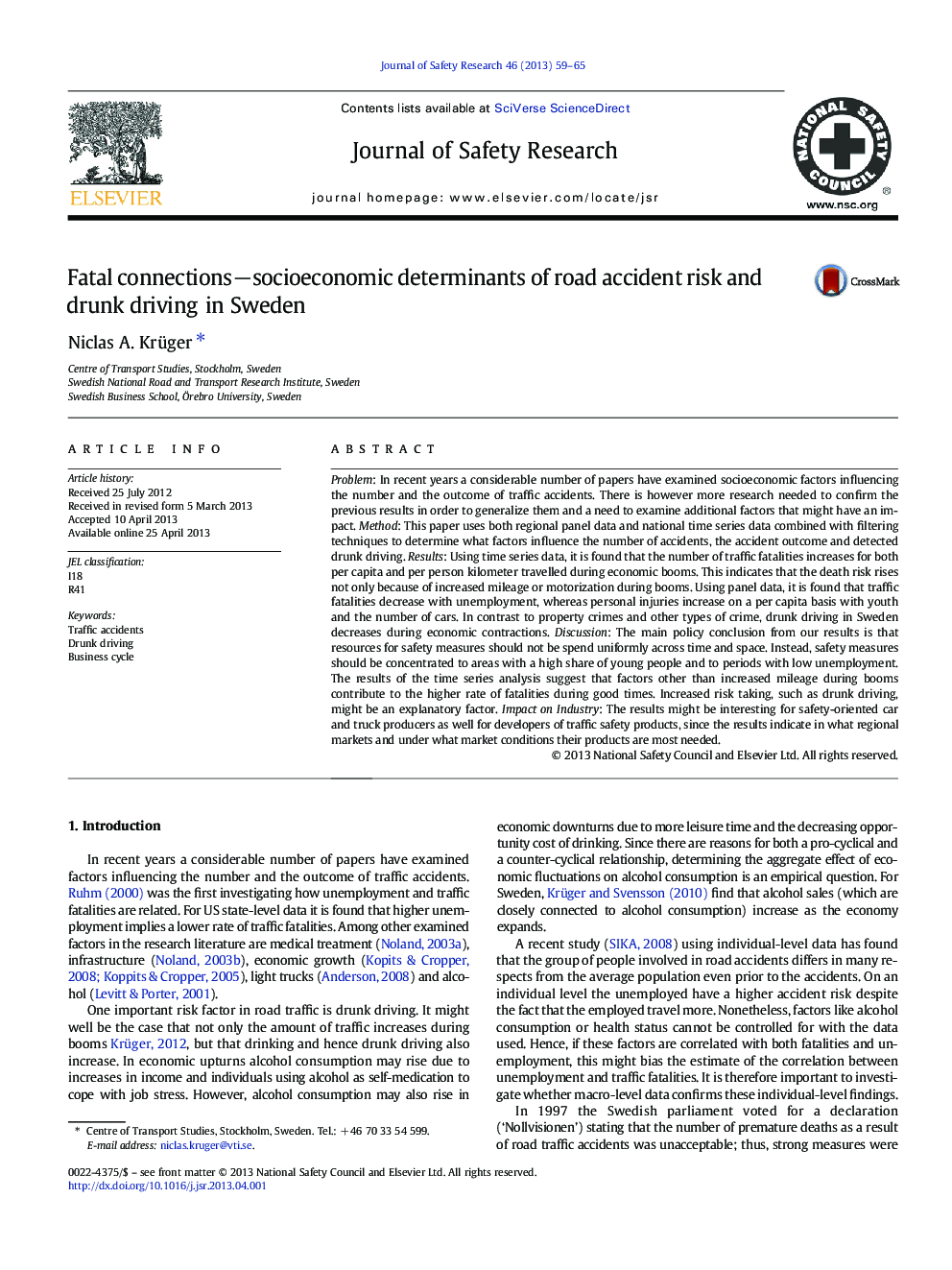| Article ID | Journal | Published Year | Pages | File Type |
|---|---|---|---|---|
| 587395 | Journal of Safety Research | 2013 | 7 Pages |
•Using time series data, we find that the number of traffic fatalities increases per person kilometer travelled during economic booms, indicating that the death risk rises not only because of increased mileage or motorization during booms.•Using panel data, we find that traffic fatalities decrease with unemployment, whereas personal injuries increase on a per capita basis with youth and the number of cars.•There is some evidence that drunk driving mostly affects pedestrians and not car drivers and passengers.•In contrast to property crimes and other types of crime, drunk driving decreases during economic contractions.•The policy conclusion from our results is not to spend resources uniformly across time and space, but to concentrate actions to areas with a high share of young people and periods with low unemployment.•The results of the time series analysis suggest that factors other than increased mileage during booms affect the higher rate of fatalities during good times. Increased risk taking, such as drunk driving, might be an explanatory factor.
Problem: In recent years a considerable number of papers have examined socioeconomic factors influencing the number and the outcome of traffic accidents. There is however more research needed to confirm the previous results in order to generalize them and a need to examine additional factors that might have an impact. Method: This paper uses both regional panel data and national time series data combined with filtering techniques to determine what factors influence the number of accidents, the accident outcome and detected drunk driving. Results: Using time series data, it is found that the number of traffic fatalities increases for both per capita and per person kilometer travelled during economic booms. This indicates that the death risk rises not only because of increased mileage or motorization during booms. Using panel data, it is found that traffic fatalities decrease with unemployment, whereas personal injuries increase on a per capita basis with youth and the number of cars. In contrast to property crimes and other types of crime, drunk driving in Sweden decreases during economic contractions. Discussion: The main policy conclusion from our results is that resources for safety measures should not be spend uniformly across time and space. Instead, safety measures should be concentrated to areas with a high share of young people and to periods with low unemployment. The results of the time series analysis suggest that factors other than increased mileage during booms contribute to the higher rate of fatalities during good times. Increased risk taking, such as drunk driving, might be an explanatory factor. Impact on Industry: The results might be interesting for safety-oriented car and truck producers as well for developers of traffic safety products, since the results indicate in what regional markets and under what market conditions their products are most needed.
